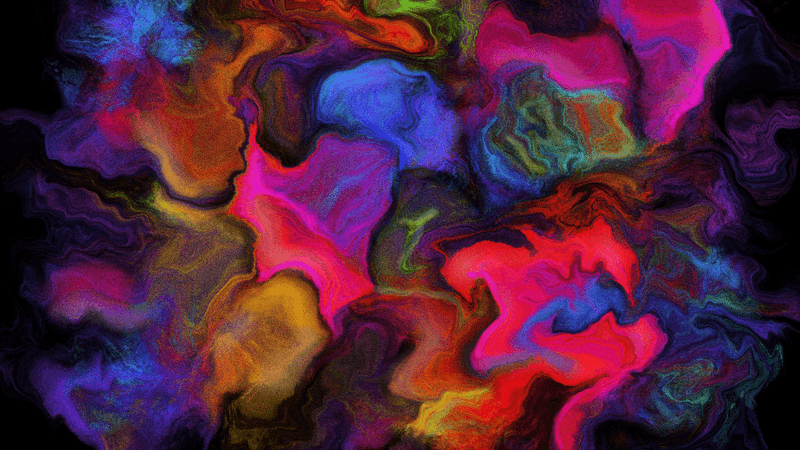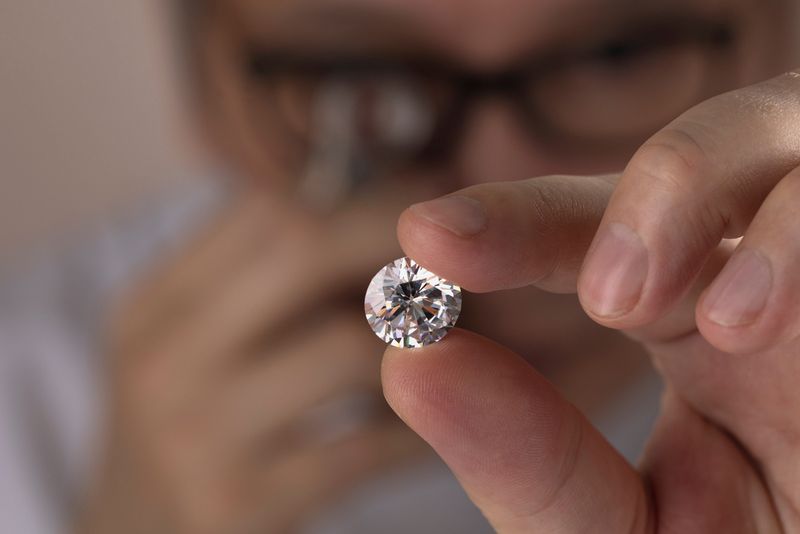This article first appeared in Issue 10 of our free digital magazine CURIOUS.
Have you ever seen the color yellow-blue? No, we don’t mean green – we’re talking about a color that’s simultaneously blue and yellow at the same time. OK, it’s hard to picture, as is the idea of a color that’s exactly as red as it is green. According to experts, however, you don’t need to rely on your mind’s eye to figure out what it would look like. “Imaginary colors”, as these seemingly impossible hues are known, are real, they argue – and we can see them, with the right equipment and techniques.
But are they correct? Can these weird, mind-bending colors really be seen?
How do we see colors?
To understand how imaginary colors work, we first must delve into how we see colors in the first place. For that, things are going to get a little bit… Matrix-y.
It may surprise you but there’s actually no such thing as color.
No, really: we know that banana looks bright yellow when you hold it up under the spotlight, but sneak down to the kitchen at midnight and take another peek. Don’t listen to your brain trying to tell you it’s still a glorious sunny shade – really look at it, and you’ll see the truth, which is that it’s now a sort of muddy dark brownish-grey color, and not that appetizing at all.
That’s because “color” isn’t really a physical property that anything has – it’s just a result of how our eyes perceive light reflecting off objects. When we see that banana as “yellow”, what’s happening is that certain wavelengths of white light are being absorbed or reflected by chemicals in the peel.
The wavelengths that are absorbed, we never see again. But the ones that are reflected are detected by our cones: millions of densely-packed cells that sit in the center of our retinas and react to different color wavelengths.
It’s the particular combination of reactions here, and the resulting electrical impulses that our cones fire off to our brains, that create what we think of as “yellow”. What’s interesting is how, exactly, our brains come to that conclusion.
Subscribe to our newsletter and get every issue of CURIOUS delivered to your inbox free each month
Opponency is “one of the oldest concepts in the science of perception,” explained biophysicists and experts in human color and spatial vision, Vincent A. Billock and Brian H. Tsou, in a 2010 article for Scientific American.
“Opponency is ubiquitous in physiology,” they wrote. “For example, to bend your arm, you relax your triceps while contracting your biceps; biceps and triceps are opponent muscles, in that they act in direct opposition to each other.”
According to our best working theories, color perception is no different. “In 1872 German physiologist Ewald Hering suggested that color vision was based on opponency between red and green and between yellow and blue,” explained Billock and Tsou; “at each spot in the visual field, the redness and greenness muscles, so to speak, opposed each other.”
This means that, just as you can’t simultaneously contract your biceps and your triceps, you also can’t simultaneously perceive a color as red and green at the same time. Red and yellow? No problem – your brain is happy to call that “orange”. Blue and green? That’s just turquoise. But red and green, together? You may as well try to bend and straighten your arm at the same time.
And that, right there, is the crack that lets in the possibility of impossible colors, which include two main types: imaginary and chimerical colors.
What are imaginary colors?
This system we’ve got going on, in which every color is perceived by pinpointing it on a scale from red to green and blue to yellow, is a pretty good one, allowing us to see around a cool million different hues on average.
There’s no real reason why “red-green” or “blue-yellow” should not exist as colors – and yet here we are, physically incapable of ever perceiving them, thanks to this particular way our brains work.
Or are we? In 1983, Hewitt D. Crane and Thomas P. Piantanida, both engineers at the Visual Sciences Program of SRI International, published a rather surprising paper: it is possible to see red and green simultaneously, they asserted – and they could show you how to do it.
These hues should, by rights, be impossible to see since they require our brains to respond to two opposing colors at the same time. Yet, by having study participants stare at side-by-side fields of red and green or yellow and blue until the borders between the colors dissolved, they had managed to induce people to see what they termed “reddish green” and “yellowish blue” – the so-called “imaginary colors”.
What are chimerical colors?
Perhaps slightly easier to understand are the so-called chimerical colors. Once again, these non-existent hues are a result of the way our cones react to different wavelengths – but this time, we’re exploiting that biology in a slightly different way.
Where imaginary colors rely on our brains’ inability to perceive two opposing colors at the same time, chimerical colors hack right into our retinas themselves. These nonexistent colors are essentially the same effect as when we get an afterimage across our vision.
It’s a neat trick if you want to visualize Abe Lincoln, but how does that extend to seeing impossible colors? The secret is in what you see the afterimage on top of: by carefully choosing the right background, you can force your eyes to see a color that is more than 100 percent saturated, for example – the so-called hyperbolic colors – or a hue which, while no doubt a real color, is simultaneously as dark as black.
Are impossible colors really impossible?
When Crane and Piantanida published their results, it should have been huge news: after all, as Billock and Tsou pointed out, they “were reporting a major violation of the best-established psychophysical law.”
But instead, many of their peers were unconvinced by the experiments: they were difficult and expensive to replicate, relying on equipment that had been specially designed by Crane himself, and the results themselves were confusing – both for study participants to describe, and for experts to explain.
When researchers finally did revisit the results, their conclusions didn’t necessarily support what Crane and Piantanida had originally asserted.
“We asked our participants to report their percepts in a more objective way,” Po-Jang Hsieh, who in 2006 conducted a variation on the 1983 experiment in which participants were asked to match the “impossible” color they saw to a color map provided by the researchers, told Live Science in 2012.
“In this way, we discovered that the perceived color during color mixing […] is actually a mixture of the two colors, but not a forbidden color.”
Even today, the existence of imaginary colors remains debated. Some researchers, like Billock and Tsou, believe Hsieh’s experiments were faulty; others think Crane and Piantanida were too quick to label regular colors as “indescribable” or “impossible”.
“Perceived color during color mixing is just an intermediate color,” Hsieh said. “Just because a color cannot be named, doesn't mean it is a forbidden color that's not in the color space.”
How to see imaginary colors
The technique is not dissimilar to those Magic Eye pictures that were big in the 1990s. Take the image below: the idea is to focus your left eye on the cross in the red square, and your right on the cross in the green. After that, it’s simple, albeit uncomfortable: you need to cross your eyes until the two crosses line up on top of one another.

It’s not guaranteed, but by doing this, you may be able to see the “reddish green” that Crane and Piantanida first reported back in the ‘80s. Similarly, you can do the same to see “yellowish blue” using the image below:

If you’re lucky, you might find yourself looking at a color you’ll never see in nature – but don’t be despondent if it didn’t work. For the success rates of Billock and Tsou, who were able to get six out of seven observers to see their “forbidden” colors, you’ll likely need both image stabilization and control over individual color luminance.
“I think what stabilization does (and what [equal brightness] enhances) is to abolish the competitive interaction between the two neurons,” Billock told Live Science. That way, “both are free to respond at the same time.”
Getting it right, though, is akin to “seeing purple for the first time and calling it bluish red,” he said. And that, we think, is well, pretty cool to imagine.
CURIOUS is a digital magazine from IFLScience featuring interviews, experts, deep dives, fun facts, news, book excerpts, and much more. Issue 13 is out now.




